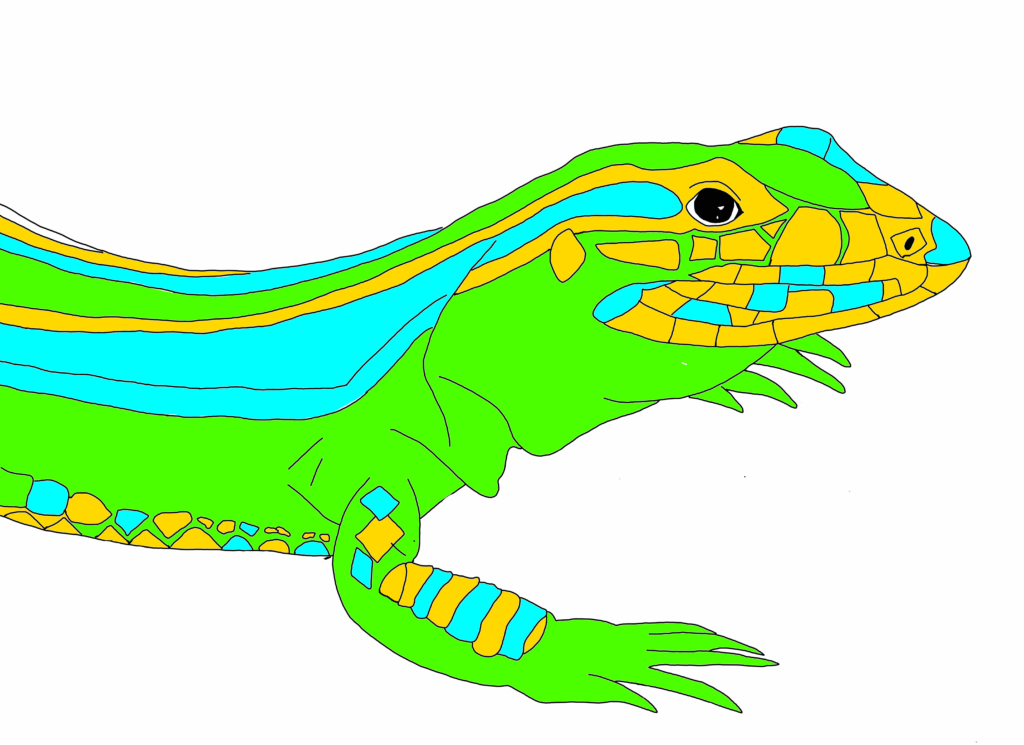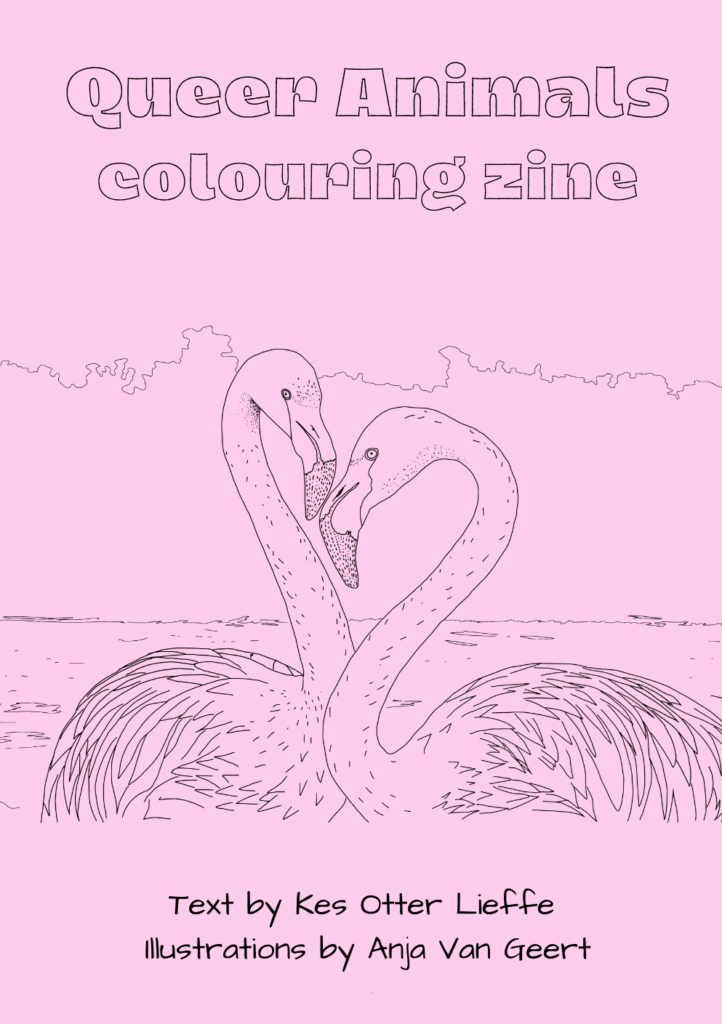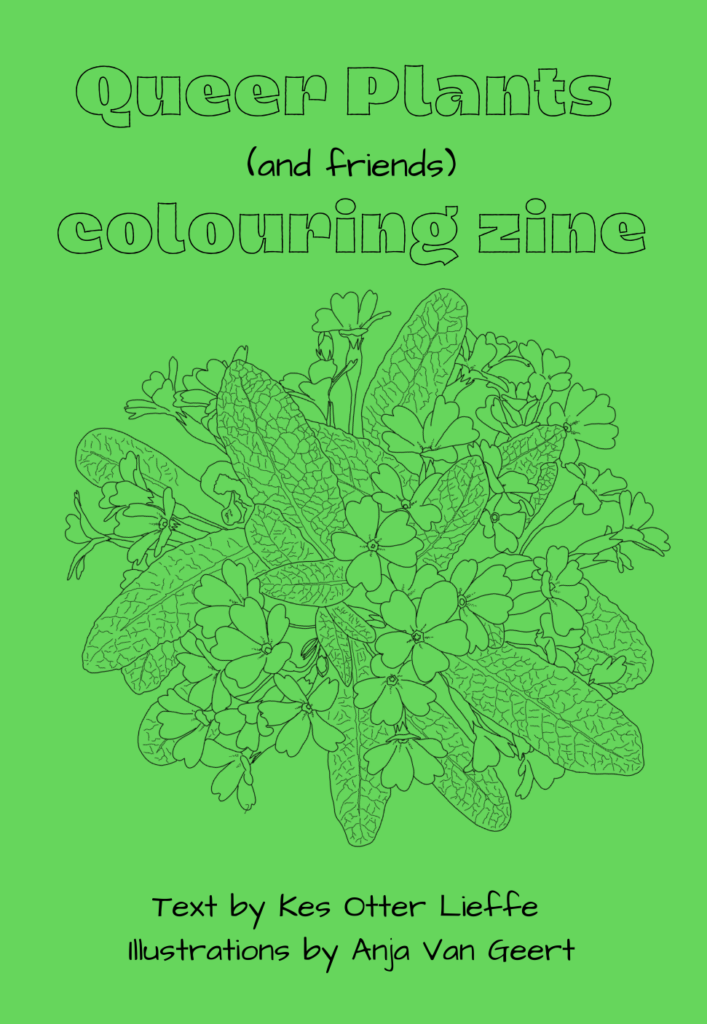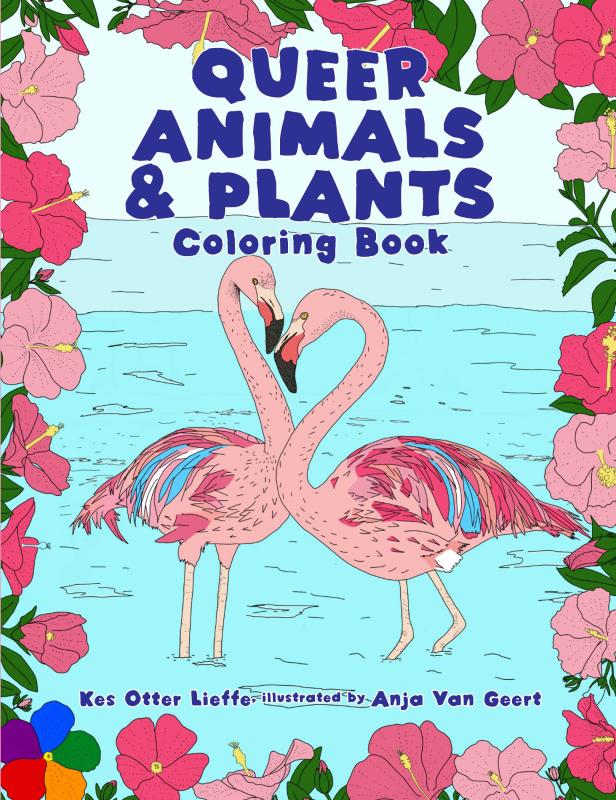
Our queer communities can be a source of connection and can help us feel less alone. But what if those communities also extend way beyond human society?
I find queerness in non-human nature to be a profoundly important subject. There’s something about knowing that there are lesbian lizards, gay giraffes, and sex-changing clownfish that just gives me hope.
As so many young nature-lovers, I grew up with wildlife programmes and I never once heard about these things. As I began to research into the few texts that exist on the subject, I discovered a world far richer than I could have imagined.
I have now been writing and teaching about this subject for years in my novels and workshops and realise more each day that none of this is new. While the term ‘queer ecology’ might be relatively new, among Indigenous communities living closer to the non-human world than the industrial society I grew up in, this knowledge is ancient.
Discover more about how queer nature really is in our
Queer Animals and Plants colouring books
Queer Animals 🦒
Homosexual behaviour has been recorded in hundreds of animal species beyond our own. Add to that the multiple genders, sex-changing, and intersexness in animal populations and the normative stories of wildlife documentaries are starting to look like a bit of a stretch. Some animals are famous for their queerness—bonobos for one, penguins for another—but the truth is that it is widespread among animal species and the more we look, the more we find. From damselflies to clownfish and from snails to mole-rats—queer animals . . . we love them!
Queer Plants 🌿
Even though the scientific world has projected some very cis heteronormative illusions onto the plant world, the queerness of plants is inescapable. They can self-fertilize, cross-fertilize, be hermaphroditic, or not: they have a spectacular range of options and we’re always discovering more about them.
Plants can work together with animals, fungi, and other plants for their pollen and seed distribution and they can alter their appearance dramatically in response to their environment.
Think of the spider plant growing on your windowsill. Remember that one time they had flowers? Sexual reproduction. Remember the ten million little babies you’ve given away to reluctant friends? Asexual clones. The clonal babies are genetically identical to the parent plant. Those new straggly spider plants now living on someone else’s windowsill, with new stripes on their leaves and a different body shape depending on the light conditions, are they individuals now or just a distant part of the parent’s body?
In June 2022, scientists discovered that a massive stretch of seagrass off the coast of Australia—big enough to cover three times the surface area of Manhattan—is actually one single asexual individual and the largest plant in the world.
And when we consider that a single species like “dandelion” can contain multitudes, our categories of species, community and individual are blurred forever. Honestly, we’re here for it.
Queer Fungi 🍄
You might not have thought about fungi a lot today. They might not seem like an especially important part of your life. But they live inside you, on you, all around you, everywhere.
The largest known organisms in the world are fungi—weighing hundreds of tons and spreading over 10 square kilometers. They can metabolize rocks and TNT. They live in the nuclear reactor in Chernobyl and might even be using the radioactivity there as a food source.
Their sex life is similarly complex—sexual, asexual, and sometimes both. One species has at least 20,000 different sexes.
And 90% of plant species depend on them for survival. In the body of a single plant there can be hundreds of species living threaded between cells protecting the plant from disease. Plant life wouldn’t exist as we know it without mycorrhizal symbiosis—the underground interconnection of plants and fungi that has existed for at least 400 million years.
With such intimacy, where do trees end and fungi begin? Our bodies are full of fungi too and they fundamentally change who we are. Life is complex, categories are fuzzy. We’re into it.
Discover more about queer ecology here
Queer Lichens 🌱
Lichens smash binaries wherever they go.
Symbiosis was once seen as a radical concept: the idea that a lichen was a compound organism of a fungus and a green alga (or a photosynthesizing bacteria called cyanobacteria) that benefited mutually from the relationship seemed absurd to scientists. Surely the fungus was holding the alga captive and exploiting it for its photosynthetic super powers. Working together? Impossible! Those ideas say a lot more about the people who believed them than it does about lichens.
Fungal-algal symbiosis is pretty wild though. Fungi and plants are far apart on the tree of life. Fungi and cyanobacteria (who also form lichens) are not even in the same domain, meaning that you and a mushroom are closer relations than any two that come together to create lichens.
In general, living things diverge over time as each branch of the evolutionary tree splits into smaller and smaller twigs. But here, different branches come together again, known as convergence: a plant and a fungus making a whole new organism. I can photosynthesize but I can’t eat rocks. Oh really? I love eating rocks but can’t photosynthesize—want to get together some time?
And they’re living their best life, covering 8% of the earth’s land surface—more than tropical rainforests—and surviving in space, just because humans love taking things into space.
The story doesn’t end there. The closer people have examined lichens, the more species they have found mixed into the relationship. Not just one fungus but several. And loads of bacteria turned up who couldn’t eat rocks or photosynthesize but could do all kinds of other useful things.
It’s grown ever more complex to the point that two-species lichens might not even be a thing and what we’ve been calling an “organism” this whole time might be a system of interactions—a whole community.
Lichens. Bringing all the complexity and we love them for it.
Queer Coral 🐠
Symbiosis is a foundational concept of ecology. And, like lichens, corals are all over it.
They might not look it at first glance, but corals are little animals—just a few milimeters across, living together in a colony. A coral reef is the result of them excreting calcium carbonate to create a skeleton to live in. They can be gonochoristic (when a coral polp has one sex), or hermaphroditic. They can reproduce sexually and asexually.
But they don’t do it alone. They usually live intimately with dinoflagellates (“whirling whips”) who are even smaller and can photosynthesize (we can think of them as micro-algae but they aren’t actually plants. It’s complicated).
Like lichens, there’s a mutual benefit to this relationship. Thanks for this nice place to live and some carbon dioxide—here, have some solar powered energy and nutrients. There are also viruses, bacteria, archaea, and fungi in the mix just to keep things complex and interesting.
These relationships can break down under stress. With changing water temperatures and salinity levels, the dinoflaggelates are expelled, which leads to coral bleaching. Climate change, pollution and over-fishing are major threats—10% of the world’s corals have already died and 60% are at risk. Occupying less than 0.1% of the Earth’s ocean area, coral reefs are home to at least 25% of marine species. Their loss is a tragedy for us all.
Discover more about how queer nature really is in our
Queer Animals and Plants colouring books
Lesbian lizards, gay giraffes, bisexual red deer and sex-changing clownfish. This colouring book celebrates the diversity of animals. We explore some of the ways in which our beautiful queer communities exist far beyond the realms of human culture.
Asexual dandelions, sex-changing willows, boundary-smashing lichens and a fungus with over 20,000 sexes (kind of).
This colouring book celebrates the beautiful queerness that exists even in the places we least expect.
Can animals be gay? Can plants be queer? Of course!
This coloring book celebrates the diversity of animals, plants, fungi, lichen, and coral. We explore some of the ways our beautiful queer communities exist far beyond the realms of human culture.
Bring your brightest colors to learn about and befriend some of the most colorful characters in nature. This entertaining and educational resource was created by trans author and ecologist Kes Otter Lieffe. This book is richly illustrated by Anja Van Geert.
The perfect gift for all your friends who love queer animals and plants!


